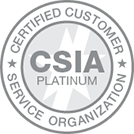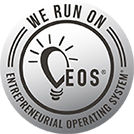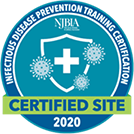How can you choose the best database for your organization? Sounds complicated, doesn’t it? But it doesn’t have to be. Let’s focus on the two key words – database and organization. Here is the tricky part- we are going to do it backward – first we will focus on your organization, then we will focus on the databases!
The decision isn’t necessarily about the database and all that it offers, but about your organization and all that it needs. You need to get to know your organization first and identify your core processes then you can start shopping for a database. Your core processes could range from membership renewals to customer service requests to meeting registration and more. Take a deep dive into your processes and pay special attention to the “hard to define” or confusing steps within each; those are usually the steps that matter most and you want to make sure that once you’re ready to shop, you look for the tools that can accomplish these tasks. These types of processes are also the ones that will start increasing your expenses.
Once you have defined your toughest processes and all that you will need to accomplish for each, you have two options for moving forward. You can change your process and try to simplify it: Do you really need to go through seven steps for a membership renewal? How can you drill it down to four steps? You can also identify this process as a must-have for any new database system you implement (keep in mind that this will impact the cost of your database).
Once you know what your processes are and have documented the most vital, it is time to move on to database shopping. The shopping part comes in a four step process and you want to follow these steps closely. If you don’t, it’s akin to going to the grocery store hungry. You will buy what you want and not what you need.
An AMS provides an association with the functionality it needs to best service their members in many different ways.
The first step in the purchasing process is collecting all of the information you already have about your organization and create a Request for Proposal (RFP) or Request for Quote (RFQ). In your request, add a section that calls out your processes and label these as must haves for your database. The vendor should know that these processes must be satisfied in order for consideration of purchase. Once you feel comfortable that your RFQ has all of the information included that is necessary to make an educated decision, send it in to the database vendors.

Usually, the vendors will have a handful of questions for you so they can make sure to build the best system based on your request. The next step on your part is to collect these questions and answer them all together in one document that you can send out all at once. Resist the temptation to answer each vendors question’s separately. Sharing the questions and answers with all vendors will give everyone even better information to move forward and deliver a quality proposal.
In step three, once you have your vendors even more narrowed down (based on who continued after the RFP round) you should create a matrix where you can list all of your key categories and weight them based on your organization’s priorities. As you read through the final responses, score the vendors based on the matrix. Here is an example:

Now that you have your matrix created, ask your team (if applicable) to score the vendors as well. This is your fourth and final step. See how their opinions match up to yours and compare notes. You will notice that this will quickly eliminate a vendor or two. Now you can focus on your final contenders.
Now you’re working toward a consensus and you have your needs, cost and vendor experience all accounted for and you can be confident in your choice.
Choosing a database is not an easy task and it’s not one that you want to rush though. This is potentially a very large investment for your organization and following a plan to make sure all of your ducks are in a row is key. Association Headquarters assists clients with database decisions and would be happy to help you through the process.




